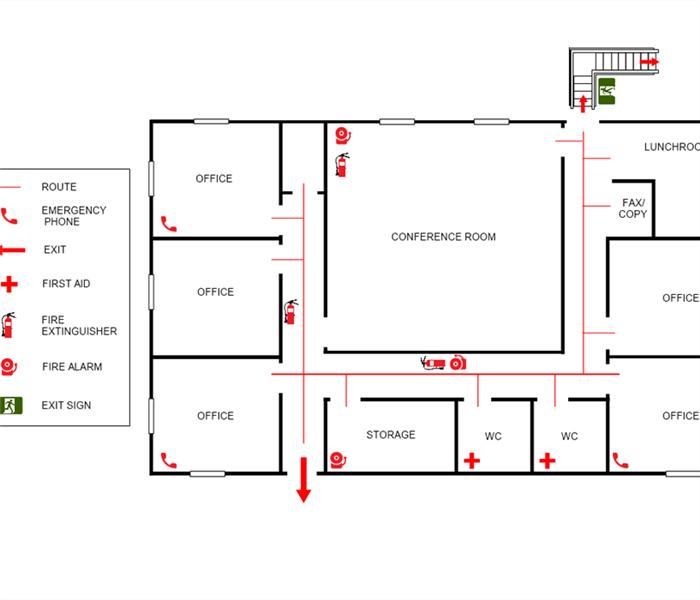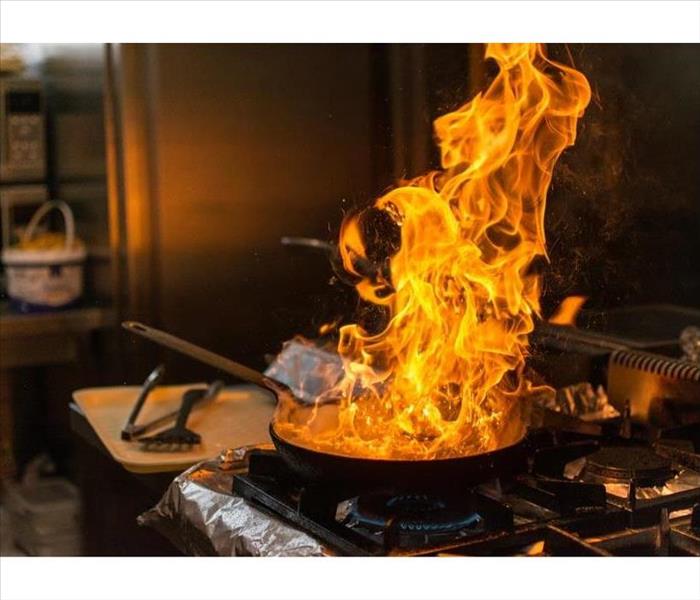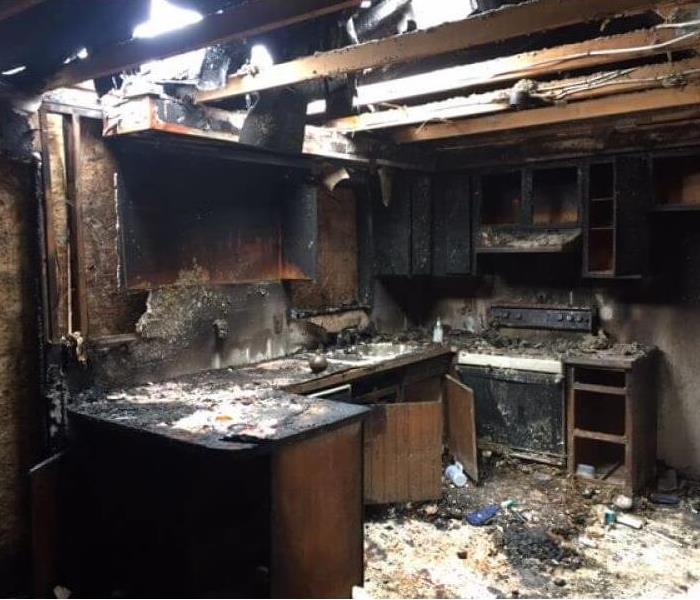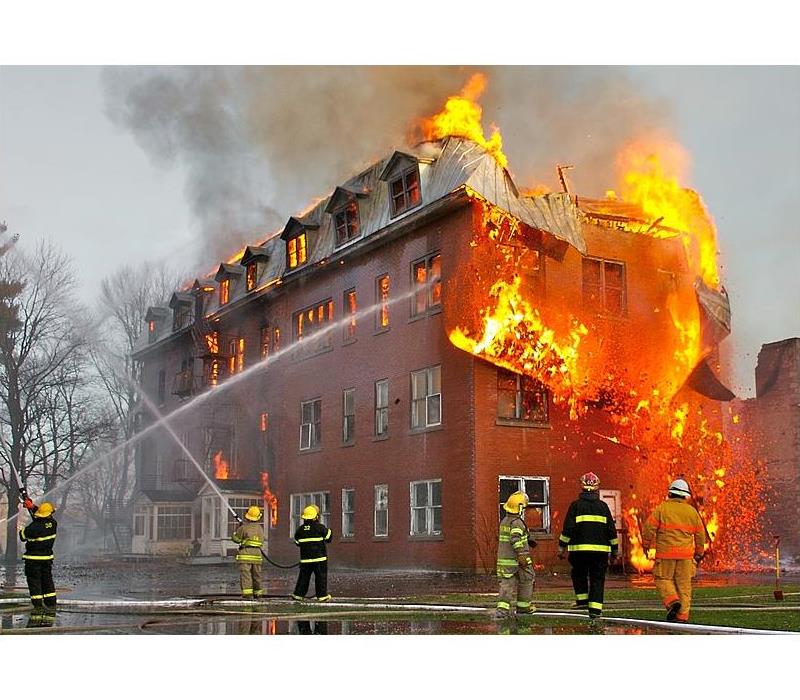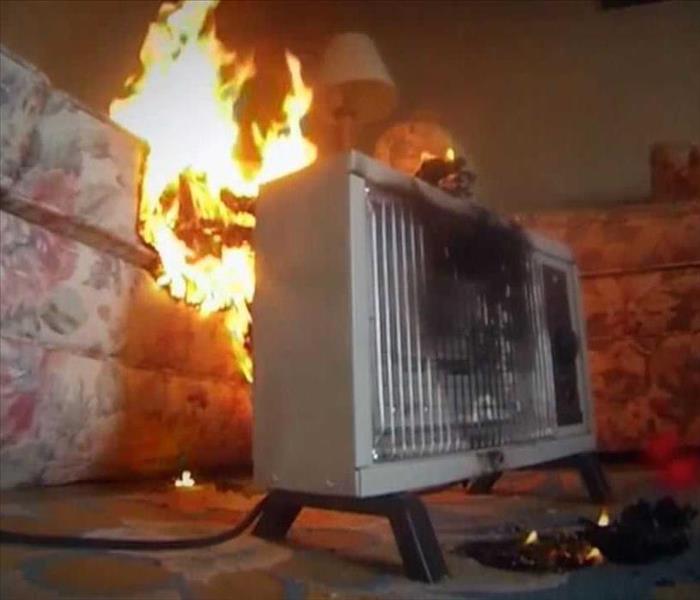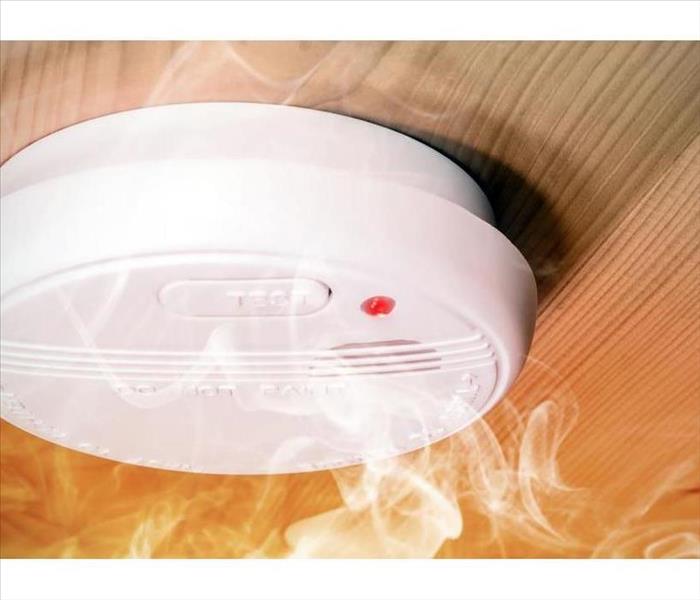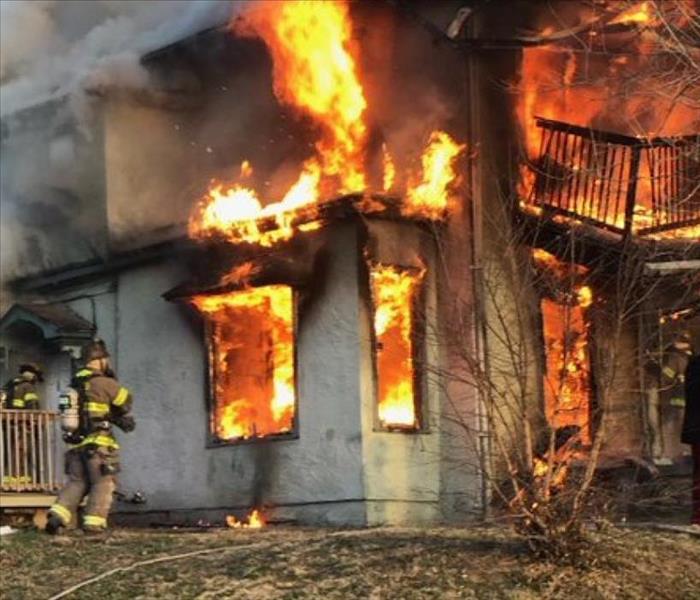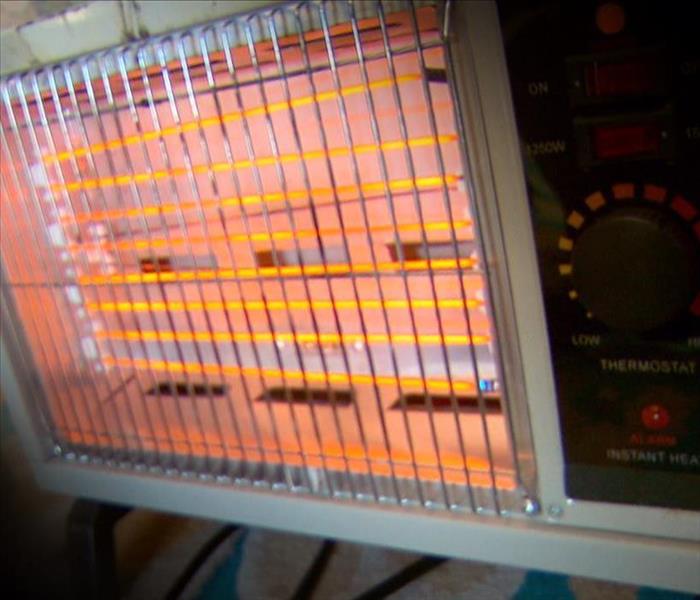Archived Fire Damage Blog Posts
How To Create a Fire Evacuation Plan for Your Business
7/28/2022 (Permalink)
In the event of a fire, having a reliable plan in place that everyone in your business is a part of is crucial. Be sure to communicate the plan explicitly and have all your employees practice it to ensure that everyone knows what to do in case of a real fire. To help you get started, here are some essential components of an effective fire escape plan for your business.
Assign Responsibilities
To establish order in your business in the event of a fire, there needs to be a clear list of responsibilities that must be taken care of. Some of the fundamental roles that you should assign to your employees include:
- Chief supervisor
- Assistant supervisor
- Floor monitor
- Route guide
The supervisors can help alert the other employees and call the fire department, and the floor monitor and route guide can make sure everyone is out of the building. Giving these roles to the employees you believe are the best fit can keep things running as smoothly as possible.
Establish Routes
A critical requirement of a good fire escape plan is mapping out clearly defined evacuation routes throughout your building. Make sure that your employees are aware of all the exits in the building so they can turn to the closest one in the event of a fire. It is also a good idea to designate an area outdoors where everyone can meet after evacuating, as this can help confirm that everyone is out of the building.
Inspect Fire Equipment
Your emergency escape plan will be futile if your fire equipment is not functioning properly. Check all the emergency tools in your building and confirm that they are up to date. Be sure to cover everything, including fire alarms, fire extinguishers, emergency lighting and fire doors. Having effective equipment can alert everyone promptly and help to facilitate your evacuation plan.
A fire escape plan is important, but a real incident can leave you with devastating damage. A fire restoration professional can help your business be up and running again “Like it never even happened.”
Most Common Causes of House Fires
6/28/2022 (Permalink)
You hear stories on the news about fires starting in homes all the time. You may have even seen a home fire firsthand in your neighborhood. The results of these incidents are tragic and costly. Although some accidents can occur despite your best efforts at prevention, knowing the most frequent fire causes in the home can help you prepare effectively and reduce your risk of facing this emergency.
Smoking
Smoking is one of the biggest causes of fires in homes. If you or any other people that live with you smoke, follow these important guidelines:
- Smoke Outside
- Always put out a cigarette in an ashtray
- Keep ashtrays up high and out of reach of children and pets
Cooking
When it comes to a home fire, the kitchen is frequently the starting point. When you prepare meals on the stove, always stay in the kitchen while the burners are on. Keep flammable objects well away from the range. Do not forget to turn off the burners and the oven when you are finished cooking.
Candles
People love candles for the ambiance they can create. Scented candles are also popular. Unfortunately, these can be dangerous and lead to necessary fire cleaning from a professional disaster restoration team. Never leave a candle burning while you are away from home. Do not let the candle burn down too far before replacing it. In addition, keep candles out of reach of younger members of your household and stay mindful of nearby objects that could catch fire.
Furnace
When it is cold outside, you love the comfort your furnace can provide. However, faulty units can be a firestarter. Have a professional inspect your furnace and heating system at least once a year. Do not put off maintenance or replacements.
Avoid a home fire and its devastating consequences. Be mindful of these causes so you can protect yourself and your loved ones.
Fire Cleanup Process
5/26/2022 (Permalink)
If your home has been damaged by a fire, contacting a remediation company is a good idea. They can professionally remove fire and smoke damage from your home and help get everything back to the way it was before the incident. One crucial part of restoring your house is cleaning up your home and any damaged belongings.
- Removing Soot from Your Home
The first part of the cleanup process will be removing any soot from your home. Soot consists of carbon particles that are created during a fire and will likely cover walls, floors, ceilings, and items near where the fire occurred. A fire restoration company will be able to clean and remove the soot damage from the structure of your home.
- Cleaning Your Belongings
Some of your belongings may have fire damage that makes it difficult to save or restore them, but others might only have smoke damage that can be removed. Any items that can be salvaged will be cleaned during the restoration process to return them to the condition they were in before the fire.
- Removing Smoke Odor from Your Home
Once all the soot has been removed from the home and your belongings have been restored, smoke cleaning will be performed to remove any remaining odors. Smoke has a strong smell that can linger in your home after a fire, but fogging equipment and industrial air scrubbers can be used to get your home smelling clean again.
After a fire, it is important that you call a professional service to perform the cleanup process for you. Depending on the size of the fire there can be quite a bit of smoke damage that can be difficult for you to remove on your own. A fire restoration company will have the proper training and equipment to return your home to its prior condition.
Creating an Inventory Is a Great Way to Plan for Fire Damage
5/5/2022 (Permalink)
Almost everyone these days has a smart phone. This can come in handy when it comes to fire damage. Go through your home and take video inventory of all your valuable items. This will help you realize what is lost after the fire. It’s a great idea to update your homeowner’s policy with newly purchased or received items that hold some value. This way, incase something does happen, they will have proof of bigger ticket items being owned and stored in the home that were lost in the fire. They will then be able to provide you with replacement options.
SERVPRO of West Hills can assist with fire damage restoration services for commercial or residential fire losses. We will also help inventory all damaged items into categories of salvageable and non-salvageable. All contents must be attempted to be restored before the insurance company can provide a replacement value them.
We pride ourselves on being faster to any size disaster. SERVPRO is open 365 days a year including weekends and holidays.
To learn more about our fire damage services, click here.
To check out some fire damage tips for what to do and what not to do, click here.
Feel free to give us a call if you have any questions or are looking for an estimate. (412) 299-5520
Fire and Water Damage Go Hand in Hand
5/2/2022 (Permalink)
When firefighters extinguish the fire in your building, home, or business you will be left with both fire and water damage. As they put out the fire, massive amounts of water will be used to get this done and to make sure there are no hot spots left. This means that everywhere they hose off will be completely saturated and water damaged.
After the firefighters leave, give SERVPRO of West Hills a call so we can begin the restoration process.
We will first assess the damage and then begin removing all the damaged materials. We will then begin a pack out process to remove all your damaged items and take them to our cleaning facility to remove smoke odor and soot damage. Next is to start the drying process with our specialized equipment. Once everything is dried, we can start the major restoration work. Before you know it, your property will look “Like it never even happened.”
6 Ways to Minimize the Risk of a Space Heater Fire
6/21/2021 (Permalink)
A space heater can be an efficient way to keep your home warm during frigid winter days. However, improper usage of a supplemental heating device can be dangerous. Six key safety tips can safeguard your residence from a burned space heater, a potentially damaging inferno, and a costly and time-consuming smoke cleanup.
Consider Safety Features
There are many models available on the market. If you have children or pets, consider purchasing a device with safety features, such as cool-touch housing or a tip-over protection switch that can automatically turn the unit off. With pets and kids running around you have the possibility of a space heater getting knocked over, and if there is no tip-over protection the heater will run and end up burning the material that it is set on.
Place in a Safe Area
Placing your heater in a safe location is also important. Avoid putting it in high-traffic areas where people may easily bump into it or trip over its cord. You should also ensure the device is several feet away from potential combustibles, such as curtains, newspapers, blankets, and upholstered furniture.
Check for Frayed Wires
Using any appliance with exposed wiring can result in an electrical fire. To avoid a burned space heater, you should routinely inspect your heater’s cord for damage.
Plug Only into Outlets
Although useful, extension cords can overheat. Because of this, you should avoid using them with your space heater. Plugging the unit directly into an available outlet is the safest option.
Do Not Place Objects on Heater
Because the space heater emits heat, it may be tempting to warm towels and clothing on the structure. However, draping any item over the unit represents a potential fire hazard.
Avoid Use in Damp Areas
Water and electricity can be a deadly combination. To alleviate the threat of electrocution, do not use a space heater in your bathroom. You should also avoid touching the device if your hands are wet.
No homeowner wants to endure a smoke cleanup or fire damage restoration project. Making conscientious decisions about how and where you use your supplemental heating source can spare you from a burned space heater and unintentional residential destruction.
A Handful of Low-Cost Fire Alarms Can Help Save Lives
6/1/2021 (Permalink)
If you could spend a few bucks to be virtually certain your family would survive a home fire, would you? Installing a fire alarm in your house wherever it is needed is an incredibly cheap and effective way to accomplish this. There may be no more cost-effective method to mitigate your risk of death than installing the correct number of smoke detectors. These tips help make the most of these simple devices.
You Cannot Go Wrong Installing More Alarms
Strategically place the smoke detectors throughout the house. Experts strongly recommend installing a fire alarm in these locations:
- Every bedroom
- Outside every sleeping area
- Every level of the house
Do not forget the basement. Go ahead and install one wherever it seems logical. The sooner your family finds out about a fire, the better. A small fire can heat up other materials in a room. Once they reach a critical temperature, an event called flashover happens where the fire spreads to most surfaces instantly. Once this occurs, it is probably too late to survive the event. In a fire evacuation, every second matters.
Install Both Ionization Alarms and Photoelectric Alarms
A photoelectric fire alarm reacts quickly to smoldering fires before they can cause a flashover. Ionization alarms are better at catching fast-moving fires. With the prices so low, go ahead and get both kinds to ensure protection and reduce fire damage. Also, some detectors now include both types of sensors.
Modern Materials Drastically Reduce Escape Time
Tests run about 30 years ago indicated that people had approximately 20 minutes to escape a home fire. However, these days that number is reduced to three or four minutes thanks to materials that are subject to quick flashover. The best way to deal with this is to use new wirelessly linked detectors that will set all alarms off throughout the house no matter where the fire is detected.
If you have a fire, make sure to get a professional smoke damage mitigation company to do a proper cleanup. Smoke can leave highly toxic residue behind in every nook and cranny, and it takes expertise to thoroughly remove all traces.
3 Types of Home Fires Not Covered by Insurance
5/5/2021 (Permalink)
A solid homeowner's insurance policy usually includes protection against home fire. While most plans cover nearly every scenario and fire damage, there are some incidents that cannot be included. These fires are usually either unlikely to occur or are often used for exploitation and financial gain. If you are a homeowner, you might need to learn more about these fires to prepare to work with an insurance agent and a residential remediation company.
- Vacant Fire
A common exception in general fire insurance involves a vacant home. While a vacant home fire can be defined differently by multiple insurance providers, a house is generally considered vacant if there are no inhabitants for 30 days in a row. So, if a fire occurs due to vandalism or a natural disaster in your uninhabited property, it cannot be covered. However, you can add separate vacant home coverage to your existing plan.
- Self-Inflicted Fire
Sometimes, a home fire may be caused by someone with the intention of hurting you or destroying your property. This is generally considered arson. However, in the insurance field, this term only applies to fires started by owners to make a claim. Insurance companies send investigators who collaborate with police to determine the cause. If the authorities discover a third party started the fire, it is classified as vandalism and you can make a valid claim.
- Unlikely Hazards
There are also other situations that insurance agencies cannot properly cover because either the loss is too great, or the causes are too unlikely to include in a general plan. The destruction caused by a war conflict or an incident involving nuclear energy is likely excluded from your policy. However, there are some agencies that provide additional, specialized coverage in addition to the regular risk areas.
Insurance for a home fire can cover a variety of factors, from natural disasters to vandalism. However, there are a few exceptions you must consider when choosing the right plan for your property.
3 Tips to Help Prevent Space Heater Fires
4/30/2021 (Permalink)
During the winter, many families use space heaters to keep their homes warm without increasing their energy bills. However, a burned space heater can quickly catch fire, and as a result, your home can sustain major fire damage. However, there are several ways you can reduce the likelihood of a space heater causing a fire in your home.
1. Maintain Your Heater's Filters
Over time, filters in space heaters accumulate dust and dirt. If the heater's filters are not cleaned, the heater may begin to emit smoke, making a fire more likely to occur. The fire and the smoke cleanup process can be costly and time-consuming, and many homeowners find it useful to contact emergency restoration services. However, frequently cleaning your heater's filters can help to prevent the heater from smoking and causing a fire.
2. Turn Off Your Heater When You Sleep and When You Leave the Room
In addition to cleaning your space heater's filter, it is also often best not to leave a space heater unattended. If you leave a space heater unattended, you likely will not notice signs that a fire may occur, such as smoke or sparks coming from the heater. Falling asleep while using a space heater can also be risky, as a burned space heater could quickly cause a fire, and you may not notice the fire until it has spread.
3. Position Your Heater Appropriately
A properly positioned space heater that is kept away from flammable items can help to reduce the likelihood of a fire occurring. However, a space heater that is positioned too close to other items, such as blankets or clothes, is significantly more likely to result in a fire. It is also often best to place your heater on a sturdy surface that is not made of plastic or other materials that may melt.
Knowing how to safely use a space heater can offer you peace of mind during the winter. You can often prevent a burned space heater from causing a fire by maintaining the heater's filters, turning off the heater when sleeping or leaving the room, and keeping your heater in a safe position.
Preparing Your Pets for a Fire
4/16/2019 (Permalink)
In the blink of an eye, our lives can change. None of us want to experience loss due to fire, water, or storm events. However, it is important to be prepared, and always think about safety first. Family members should have an agreed upon meeting spot if they would have to exit the home in the event of a sudden emergency. Also, an escape ladder should be positioned near a window inside the home. Often, families have pets, and let us not forget the furry ones of our family. Is there a "get away bag" near an exit with a few cans of food for the furry ones, some water, and one or two of their favorite toys, and some of their medications packed. Also, are there friends or family that would take the pets in if you and your family were to be displaced as a result of a fire, water, or storm event loss at your place of living.
Holiday Cooking
12/21/2018 (Permalink)
Unattended cooking is the main cause of home fires. When cooking during the holiday season, you may be distracted by guests or cooking in ways that are out of your normal cooking routine. Don't leave the kitchen without turning off the heat, and remember to keep flammable items such as pot holders, wooden utensils, and food packaging off the stovetop. When using the oven, set a timer to remind yourself it's in use. You might want to consider keeping a lid nearby when you are cooking on top of the stove. You can use that lid to smother a grease fire. For a flame up in the oven, turn off the heat and leave the oven door closed until the fire goes out. Never use water to put out a grease fire. Keeping a box of baking soda nearby will help put down a grease fire. And last, but certainly not least, if the fire is big--everyone get out of the building, close the door to contain the flames.
Kitchen Fires
5/21/2018 (Permalink)
From 2011-2015, USA fire departments responded to an estimated average of 170,200 home structure fires that involved cooking equipment. Forty-seven (47 %) percent of reported homes structure fires were caused by cooking. Never leave pots and pans unattended on the stove--don't forget to turn the oven off after the baking is completed; double check yourself. Don't believe that running up the street to the convenience store for 5 minutes and leaving flames on, yet low, on the stove, is safe--it's not. For instance, boiling water on the stove, and then going off to check the laundry. The laundry is finished, and you become distracted, wanting to fold the clothes while they are still hot out of the dryer. In an effort to save time later, and complete the task, you continue on to another area of the home, to put all the folded clothes away. How much time has passed? How high was that flame on the stove? How much water was in the pot? It could be long enough to evaporate all the water in the pot, and the flame continues on without the benefit of water in the pot. Most fires are not total losses, and most fires are kitchen fires, however, no one wants to have a fire experience in their lives.
Prevent Christmas Tree Fires
12/14/2017 (Permalink)
There are certain types of fires and injuries associated with holiday decorating, and are much more common during this season. Look for a Christmas tree that is fresh, and has green needles that don't fall out. Brownish needles mean the tree is dried out and more prone to catch fire. Test your lights out BEFORE you add them to the tree for any irregularities. Water your tree daily to prevent it from drying out. Consider the behavior of pets and small children when laying out your tree area. Keep your tree at least 3 feet away from any heat source, such as a fireplace, radiator, candles or lights. Always turn off lights on a tree before going to bed, or leaving your home. And it is a very wise and practical idea--if you haven't checked lately--that you check to confirm that your smoke alarm(s) are working properly. Remember, safety first.





 24/7 Emergency Service
24/7 Emergency Service
